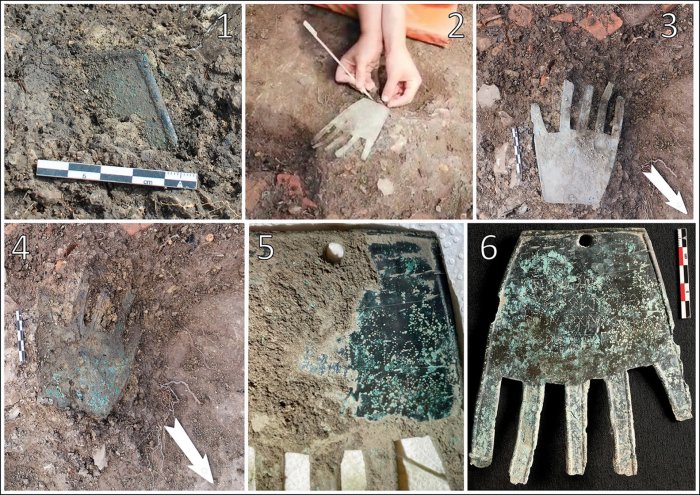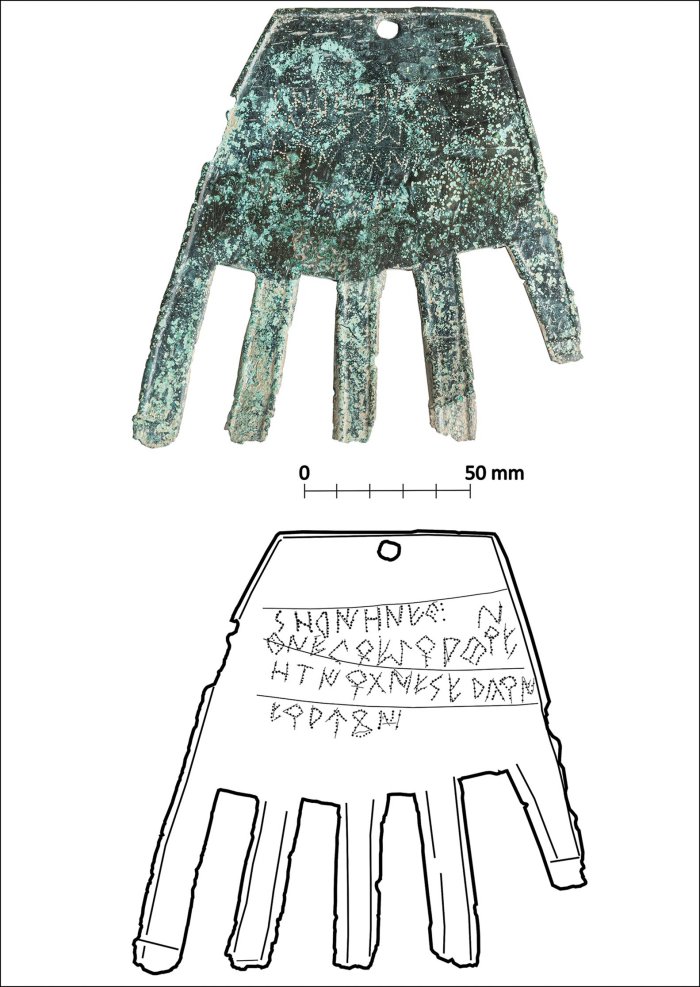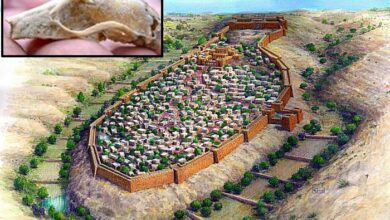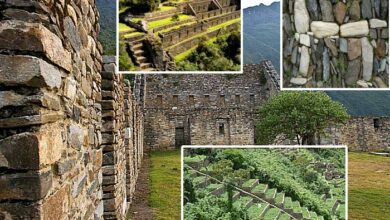Puzzling Vasconic Inscription On Ancient Irulegi Hand Resembles Basque Language
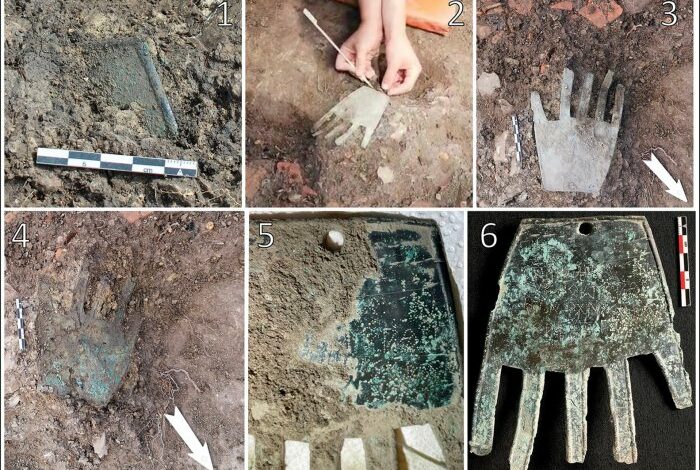
Jan Bartek – AncientPages.com – A few years ago, archaeologists excavating an Iron Age site known as Irulegi in northern Spain discovered a flat bronze artifact shaped like a human hand. After careful cleaning, they found it bore inscriptions of words from a Vasconic language. This language family includes Basque and several other languages that have since become extinct.
Sequence of photographs illustrating the excavation (1–4) and restoration (5–6) of the Irulegi hand. Credit: Antiquity (2024). DOI: 10.15184/aqy.2023.199
The number of Palaeohispanic writing samples discovered in the Vasconic regions of modern-day Navarre is quite limited. This has led to the assumption that the Vascones, who inhabited these areas, were likely a society that existed before the advent of written language. The ancient bronze hand unearthed by researchers can shed new light on the Basque language.
Irulegi Hillfort And The Basque Language
The Irulegi hillfort, located at Lakidain in the Aranguren Valley, is a significant historical site due to its extensive past and remarkable preservation. Situated atop the mountain from which it derives its name, this fortification is among the most prominent in the western Pyrenees.
This settlement’s origins can be traced back to the Middle-Late Bronze Age (15th-11th centuries BC), marking an enduring period of habitation until approximately the first third of the first century BC. It was during this time that it likely experienced a violent attack, presumably by Roman forces, resulting in its eventual desertion. The final active phase at Irulegi coincides with the Sertorian War (82–72 BC). It’s reasonable to suggest that its devastation may be connected to this conflict which originated from Rome’s initial internal strife known as Social War (91–88 BC).
The conflict involving Governor Quintus Sertorius and Gnaeus Pompeius Magnus, also known as Pompey the Great, eventually escalated to encompass a significant portion of the Iberian Peninsula, particularly the Ebro Valley. There is substantial evidence indicating that this dispute led to the devastation and subsequent desertion of Irulegi.
The Basque people are a unique group living in the Basque Country – an autonomous region in Spain nestled against the Pyrenees mountains and bordering France. The official language of this region is Basque, which has intrigued linguistics experts due to its resilience. As one of the last remaining languages from the Paleo-European family, it is surprising that it has not vanished like most others since the introduction of Indo-European languages.
Deciphering The Inscription On The Irulegi Hand
In a new study published in the journal Antiquity, scientists report conducting a detailed linguistic analysis of the Vasconic inscription and deciphering parts of it.
“The most remarkable feature of the Irulegi hand is the inscription engraved on the back. It consists of four lines of text, intended to be read by orientating the hand with the fingers pointing downwards and with the hole at the top.
Aerial photograph of the site of Irulegi; B: aerial photograph of the excavation area in the Iron Age settlement, with the location of the Irulegi hand in building 6000 (photographs by authors). Credit: Antiquity (2024). DOI: 10.15184/aqy.2023.199
The script used for the text on the Irulegi hand clearly belongs to the family of the Palaeohispanic semi-syllabaries, but the signs present some features that lead us to classify them as a distinct sub-system. Eighteen different signs can be discerned.” the researchers write in their study.
So far, the science team has discovered that the initial word, when transcribed in a Latin script, could be “sorioneke” or “sorioneku”. Interestingly, both bear a striking resemblance to “zorioneko”, which is Basque for “good fortune”.
The Irulegi hand inscription had a hole bored at the junction of the palm and wrist, indicating it was designed to be hung. Its discovery near a doorway implies it might have once been suspended above an entrance. Researchers suggest that the hand could have served a ceremonial role, bestowing luck upon those who crossed the threshold.
The inscription on the 2,100-year-old Irulegi hand “provides support for a growing awareness that the ancient Vascones knew and made use of writing, at least to a degree. The implications of the discovery of the Irulegi hand for the epigraphic and historical understanding of the Vasconic territory, as well as the possible linguistic connections between the Vasconic, Iberian and modern Basque languages, require further in-depth analysis.
Photograph of the Irulegi hand and drawing based on the photograph and a scanned image of the hand (figure by authors). Credit: Antiquity (2024). DOI: 10.15184/aqy.2023.199
Given the scarcity of other firm evidence, the Irulegi hand and its inscription will henceforth constitute an indispensable starting point for the establishment of a linguistic map of the region and any debate on the origin and development of the Vasconic language and script,” researchers conclude in their paper.
See also: More Archaeology News
According to scientists, the Irulegi hand in the archaeological record is quite unique, with very few comparable items. The most similar artifact can be found at the Iron Age site of El Puy de Alcalá in Alcubierre (Huesca). However, this piece is crafted from lead and exhibits a more slender and realistic design than Irulegi’s.
The study was published in the journal Antiquity
Written by Jan Bartek – AncientPages.com Staff Writer

